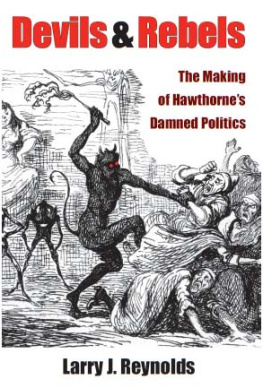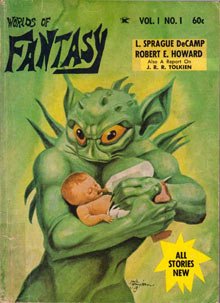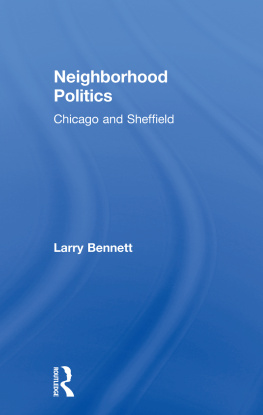Larry J. Reynolds - Devils and Rebels: The Making of Hawthornes Damned Politics
Here you can read online Larry J. Reynolds - Devils and Rebels: The Making of Hawthornes Damned Politics full text of the book (entire story) in english for free. Download pdf and epub, get meaning, cover and reviews about this ebook. publisher: The University of Michigan Press, genre: Politics. Description of the work, (preface) as well as reviews are available. Best literature library LitArk.com created for fans of good reading and offers a wide selection of genres:
Romance novel
Science fiction
Adventure
Detective
Science
History
Home and family
Prose
Art
Politics
Computer
Non-fiction
Religion
Business
Children
Humor
Choose a favorite category and find really read worthwhile books. Enjoy immersion in the world of imagination, feel the emotions of the characters or learn something new for yourself, make an fascinating discovery.
- Book:Devils and Rebels: The Making of Hawthornes Damned Politics
- Author:
- Publisher:The University of Michigan Press
- Genre:
- Rating:3 / 5
- Favourites:Add to favourites
- Your mark:
- 60
- 1
- 2
- 3
- 4
- 5
Devils and Rebels: The Making of Hawthornes Damned Politics: summary, description and annotation
We offer to read an annotation, description, summary or preface (depends on what the author of the book "Devils and Rebels: The Making of Hawthornes Damned Politics" wrote himself). If you haven't found the necessary information about the book — write in the comments, we will try to find it.
Devils and Rebels: The Making of Hawthornes Damned Politics — read online for free the complete book (whole text) full work
Below is the text of the book, divided by pages. System saving the place of the last page read, allows you to conveniently read the book "Devils and Rebels: The Making of Hawthornes Damned Politics" online for free, without having to search again every time where you left off. Put a bookmark, and you can go to the page where you finished reading at any time.
Font size:
Interval:
Bookmark:

Copyright by the University of Michigan 2008
All rights reserved
Published in the United States of America by
The University of Michigan Press
Manufactured in the United States of America Printed on acid-free paper
Printed on acid-free paper
2011 2010 2009 2008 4 3 2 1
No part of this publication may be reproduced, stored in a retrieval system, or transmitted in any form or by any means, electronic, mechanical, or otherwise, without the written permission of the publisher.
A CIP catalog record for this book is available from the British Library.
Library of Congress Cataloging-in-Publication Data
Reynolds, Larry J. (Larry John), 1942 - Devils and rebels : the making of Hawthorne's damned politics / Larry J. Reynolds.
p. cm.
Includes bibliographical references and index.
ISBN-13: 978-0-472-11669-0 (cloth : acid-free paper)
ISBN-10: 0-472-11669-x (cloth : acid-free paper) 1. Hawthorne,
Nathaniel, 18041864Political and social views. 2. Politics and
literatureUnited StatesHistory19th century. I. Title.
PS1892.P64r49 2008
813'.3dc22 2008022951
ISBN13 978-0-472-02594-7 (electronic)
For Susan
It is a pleasure to acknowledge those who have helped with the writing of this book. I am grateful to my colleagues at Texas A&M University, particularly my friends Marian Eide, Richard Golsan, Howard Marchitello, Pamela Matthews, David McWhirter, and Mary Ann O'Farrell, who have been consistently supportive of this project. I want to extend special thanks to my former department head Paul Parrish, for creating such a congenial environment in which to teach and write. I am also grateful to Texas A&M University for awarding me a faculty development leave during the fall of 2005 to work on this book.
I have received excellent aid from a series of graduate research assistants: Kate Bedard, David Cockley, Amy Larsen, and Sun-jin Lee. I thank them for their efforts. James Rosenheim, the director of the Melbern G. Glasscock Center for Humanities Research at Texas A&M University, was kind enough to invite me to present an initial draft of this study at a meeting of the center's fellows, whose responses helped me clarify my argument. I am particularly indebted to Al Broussard, April Hatfield, Larry Oliver, Sally Robinson, Robert Shandley, Susan Stabille, and Victoria Rosner for their questions and suggestions.
My research for this book was inspired by the work and the words of a number of eminent Americanists. I wish to acknowledge my particular indebtedness to Nina Baym, Millicent Bell, Sacvan Bercovitch, Lawrence Buell, Bell Chevigny, Samuel Coale, Phyllis Cole, Monika Elbert, Teresa Goddu, Len Gougeon, Gordon Hutner, Buford Jones, Robert Levine, Deshae Lott, Richard Millington, Joel Myerson, Frederick Newberry, Leland Person, Sandra Petrulionis, Joel Pfister, Jeffrey Steele, and Susan Williams.
I owe a special debt to two friends and Hawthorne specialists, Brenda Wineapple and Thomas Mitchell, who read early portions of this study. I thank them for their expert commentary. I'm also grateful to the anonymous readers for the University of Michigan Press for their detailed responses. The fine editors Jana Argersinger and Albert J. von Frank helped me improve a portion of this study, published as the article The Challenge of Cultural Relativity: The Case of Hawthorne, ESQ: A Journal of the American Renaissance 49 (2003): 12947. Another portion appeared as the essay Strangely Ajar with the Human Race: Hawthorne, Slavery, and the Question of Moral Responsibility, in Hawthorne and the Real: Bicentennial Essays, ed. Millicent Bell (Columbus: Ohio State University Press, 2005), 4069. I am grateful to the anonymous readers of that volume for their commentary.
For generously sharing with me useful information and documents over the years, I wish to thank Amy Earhart, Robert Gross, Julie Hall, Jan Little, Melinda Ponder, and Magnus Ulln. Three of my colleagues have been generous enough to read the entire book in manuscript and to suggest needed revisions: I'm deeply grateful to my current department head, Jimmie Killingsworth, for his timely and helpful reading; to my good friend Dennis Berthold, for his expert reading and helpful responses, given week after week following our racquetball games; and to my wife, Susan Egenolf, for her insightful reading, penetrating questions, and warm support. To Susan and our children, Charlotte and Logan, I also extend heartfelt gratitude for their joy, love, and patience.
Throughout this study, I have used The Centenary Edition of the Works of Nathaniel Hawthorne, ed. William Charvat et al., 23 vols. (Columbus: Ohio State University Press, 196297). This edition is cited parenthetically in the text by volume and page number. The titles of the volumes are as follows:
Vol. 1: The Scarlet Letter (1962)
Vol. 2: The House of the Seven Gables (1965)
Vol. 3: The Blithedale Romance and Fanshawe (1964)
Vol. 4: The Marble Faun: or, The Romance of Monte Beni (1968)
Vol. 5: Our Old Home: A Series of English Sketches (1970)
Vol. 6: True Stories from History and Biography (1972)
Vol. 7: A Wonder Book and Tanglewood Tales (1972)
Vol. 8: The American Notebooks (1972)
Vol. 9: Twice-Told Tales (1974)
Vol. 10: Mosses from an Old Manse (1974)
Vol. 11: The Snow Image, and Uncollected Tales (1974)
Vol. 12: The American Claimant Manuscripts (1977)
Vol. 13: The Elixir of Life Manuscripts (1977)
Vol. 14: The French and Italian Notebooks (1980)
Vol. 15: The Letters, 18131843 (1984)
Vol. 16: The Letters, 18431853 (1985)
Vol. 17: The Letters, 18531856 (1987)
Vol. 18: The Letters, 18571864 (1987)
Vol. 19: The Consular Letters, 18531856 (1988)
Vol. 20: The Consular Letters, 18561860 (1988)
Vol. 21: The English Notebooks, 18531856 (1997)
Vol. 22: The English Notebooks, 18561860 (1997)
Vol. 23: Miscellaneous Prose and Verse (1995)
Rebellion is like witchcraft.
Cotton Mather, A Discourse on Witchcraft
I admire this in Gothic architecturethat you cannot master it all at oncethat it is not a naked outline, but as deep and rich as human nature itself, always revealing new ideas, and new larger ones. It is as if the builder had built himself up in it, and his age, and as if the edifice had life.
Hawthorne, English Notebooks
This book is about the making of Nathaniel Hawthorne's politics, not primarily his efforts to secure and maintain political appointments through his friends in the Democratic Party, but rather his system of values and beliefs as they affected his political perspectives, especially on abolitionism and slavery. Hawthorne's political connections and appointments have caused observers in his time and ours to assume that his politics were simply those of the conservative wing of the Democratic Party, which fell into disrepute in the North during the 1850s, but this assumption lacks validity and has led to a number of misconceptions about his political thought. While Hawthorne's finely wrought tales and romances earned him high praise as an author, his association
The opprobrium cast on Hawthorne, past and present, illuminates not merely the difficulties faced by a public intellectual of imagination and thoughtfulness during times of political strife but also the need to develop a more comprehensive approach to the literary history of the American Renaissance, an approach less indebted to the discourse of New England righteousness and more attentive to perspectives and values beyond that region. Let me hasten to say I have no quarrel with judging an author with respect to one's own present set of moral and political values (how can one do otherwise?); however, to be fair, scholars need to recognize and allow for the cultural relativity of such values. Hawthorne's racism is a case in pointit was invisible to other white citizens in his time, though glaringly wrong in ours.
Font size:
Interval:
Bookmark:
Similar books «Devils and Rebels: The Making of Hawthornes Damned Politics»
Look at similar books to Devils and Rebels: The Making of Hawthornes Damned Politics. We have selected literature similar in name and meaning in the hope of providing readers with more options to find new, interesting, not yet read works.
Discussion, reviews of the book Devils and Rebels: The Making of Hawthornes Damned Politics and just readers' own opinions. Leave your comments, write what you think about the work, its meaning or the main characters. Specify what exactly you liked and what you didn't like, and why you think so.










